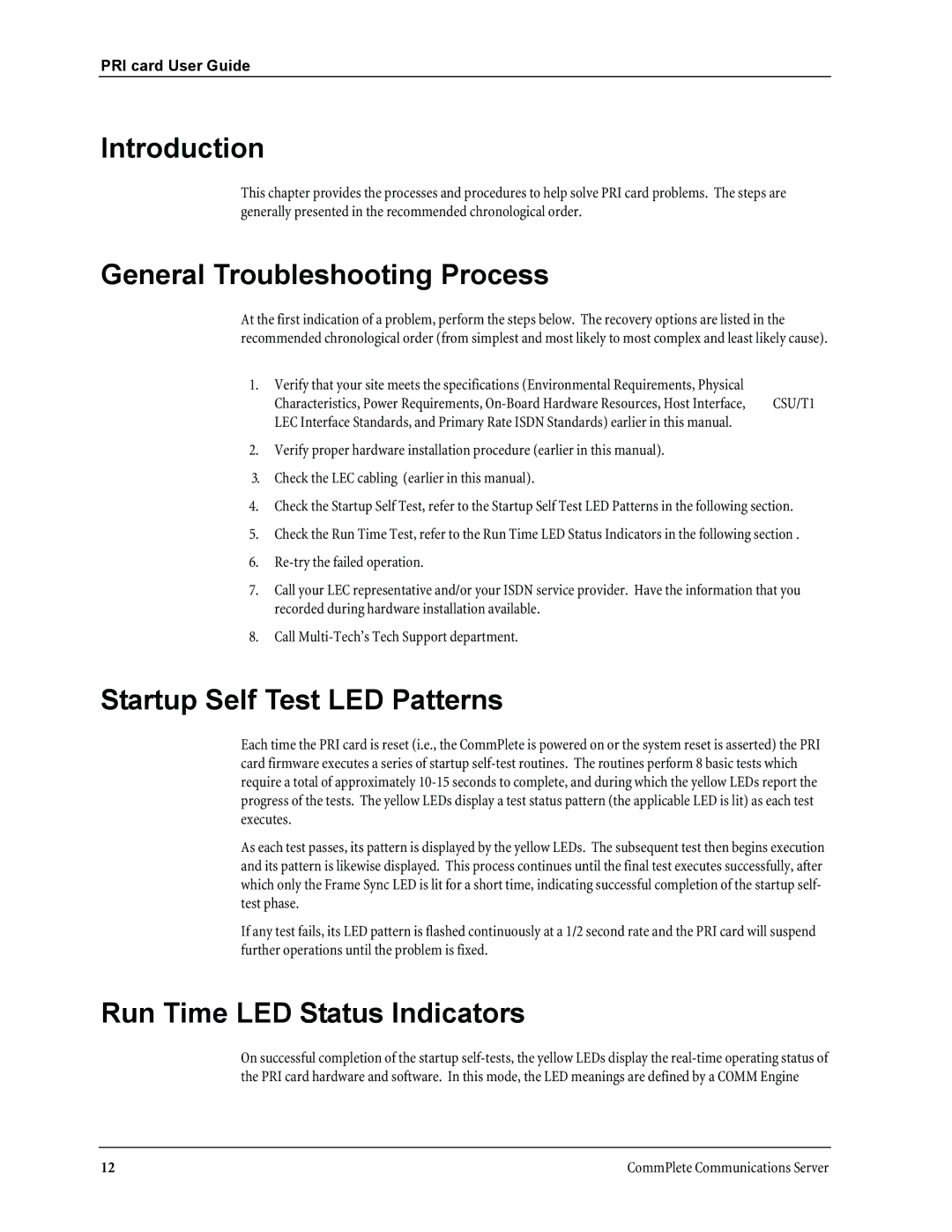
PRI card User Guide
Introduction
This chapter provides the processes and procedures to help solve PRI card problems. The steps are generally presented in the recommended chronological order.
General Troubleshooting Process
At the first indication of a problem, perform the steps below. The recovery options are listed in the recommended chronological order (from simplest and most likely to most complex and least likely cause).
1.Verify that your site meets the specifications (Environmental Requirements, Physical
| Characteristics, Power Requirements, | CSU/T1 |
| LEC Interface Standards, and Primary Rate ISDN Standards) earlier in this manual. |
|
2. | Verify proper hardware installation procedure (earlier in this manual). |
|
3. | Check the LEC cabling (earlier in this manual). |
|
4.Check the Startup Self Test, refer to the Startup Self Test LED Patterns in the following section.
5.Check the Run Time Test, refer to the Run Time LED Status Indicators in the following section .
6.
7.Call your LEC representative and/or your ISDN service provider. Have the information that you recorded during hardware installation available.
8.Call
Startup Self Test LED Patterns
Each time the PRI card is reset (i.e., the CommPlete is powered on or the system reset is asserted) the PRI card firmware executes a series of startup
As each test passes, its pattern is displayed by the yellow LEDs. The subsequent test then begins execution and its pattern is likewise displayed. This process continues until the final test executes successfully, after which only the Frame Sync LED is lit for a short time, indicating successful completion of the startup self- test phase.
If any test fails, its LED pattern is flashed continuously at a 1/2 second rate and the PRI card will suspend further operations until the problem is fixed.
Run Time LED Status Indicators
On successful completion of the startup
12 | CommPlete Communications Server |
